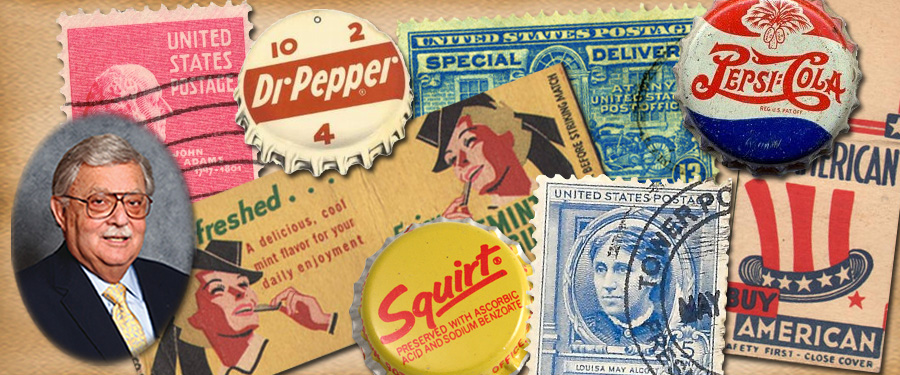
When I talk to collectors I am often asked: "Did you collect coins as a teenager, or did you have any other hobbies?" Since I am past my 86th birthday, my teenage memories go back to the 1930s and early 1940s, the years at the end of and just after the Great Depression. At that time, saving in the form of coin collecting was not easy. People were making $10 to $20 dollars a week and supporting families, so every bit of money had great value.
So what did I and other kids collect? Well, if we opened a bottle of soda or used a bottle that had a bottle cap, we collected them. We found them on the kitchen table, on the street, and sometime in garbage cans. They usually had a company name or advertisement on them, so kids collected all the different ones that they could find. We never bought them, but got different ones by trading. We also used them for sport, we would pitch them against the wall, and the one who got closest got the “pot.” This went on for hours if we weren’t playing ball or some other sport. We accumulated them as “treasures.”
If we had a few cents to spare we bought "Immies" or marbles with various colors and designs. The more different examples you had the "richer" you were. Duplicates were traded. We would mark a target on a sidewalk or in a gutter, set a target near the middle, and "shoot them" to stop near or in the target. It was an entertaining game of chance and those who won gathered the most pieces and became the "rich kid on the block." Anything that cost money was cherished as a treasure and saved carefully.
Because of the economic situation we found other free things to collect, including matchbook covers. With every pack of cigarettes or cigars or tobacco sold, a book of 20 matches was given by the store, sometimes two books. We found them at home, in stores, disregarded in streets and theaters — anywhere they were lost or used up and thrown away. It was amazing how many different covers were made in various colors and with different designs. They were advertising pieces, effective in that a person might look at each 20 times before disregarding. For us kids, they could be acquired for no cost, except the time spent bending over and picking them up. I remembered that my mother did not like them in the house and made me cut off the remainder of the matches and the striking piece, before I could put away my "savings." We all had shoeboxes full of matchbook covers and we traded back and forth to develop a collection.
Another no cost hobby was saving used postage stamps taken off of envelopes. With the issuance by James Farley of many different designs and commemorative issues, we could many different examples. Farley, as Postmaster General, issued many, many designs and denominations to attract stamp collectors who wanted Mint State, unused singles and blocks of 4, with and without plate numbers. This benefited the Post Office, as until the stamps were placed on a piece of mail, the Post Office did not have to provide any goods and services. The sale of new and unused stamps helped take the Post Office out of debt and even make a profit. For them, it made a great source of revenue.
But as kids we rarely had the money to purchase new, unused stamps. So how did we collect them? First we found a stamp album that had marked spaces to place each stamp. When mail arrived, after our parents had opened it, we were given the envelopes with the cancelled stamps — therefore considered used. We would soak them in a sink until they got loose, remove them and then dry between pieces of paper or a blotter. When dried, we placed a small "hinge" on the back and stuck them into our album. If our parents received lots of mail at their jobs, they would bring home the used envelopes. Our postage stamp collections grew with no cost for the stamps. This form of collection cost virtually nothing.
These were just a few of the hobbies we had in the late 1930s and early 1940s. When we did have some small change (from working or an allowance), we often purchased items for our collections. In my next story I will talk about some of the collectibles we spent our limited funds on during this post recession period.





